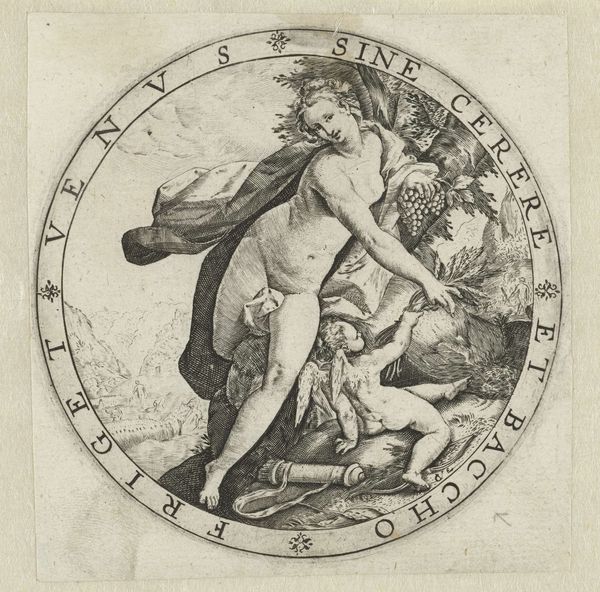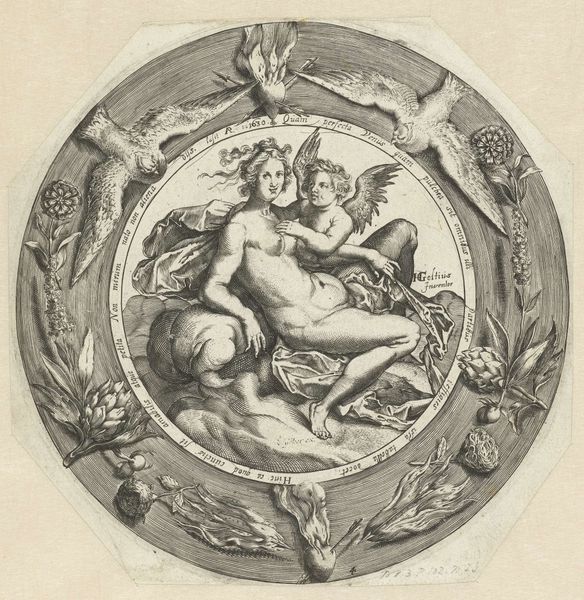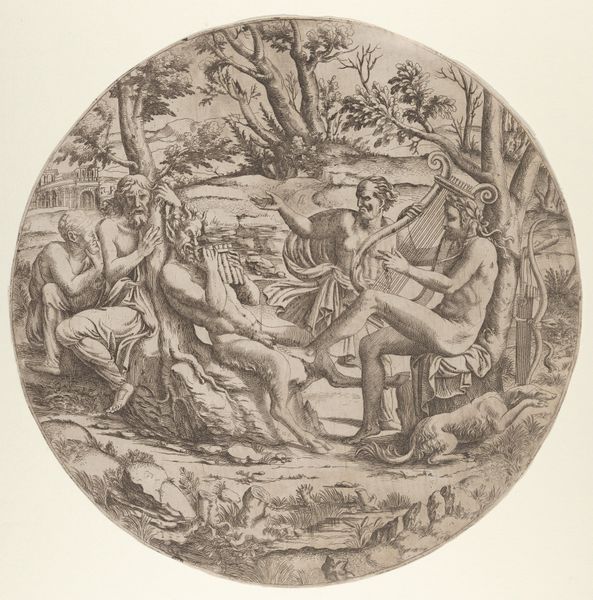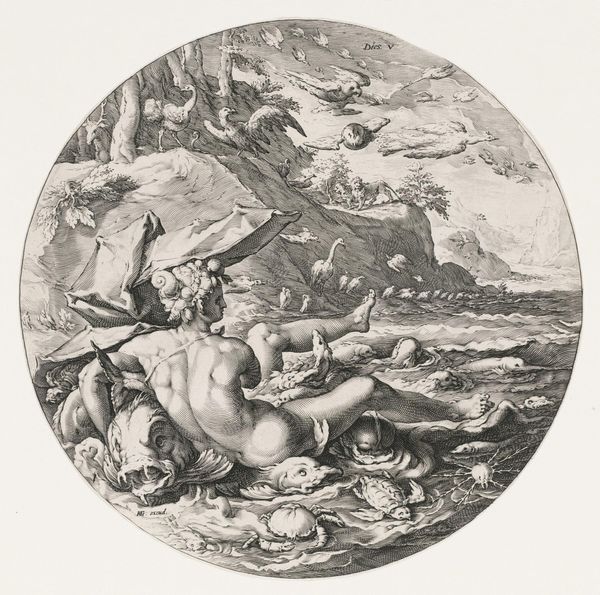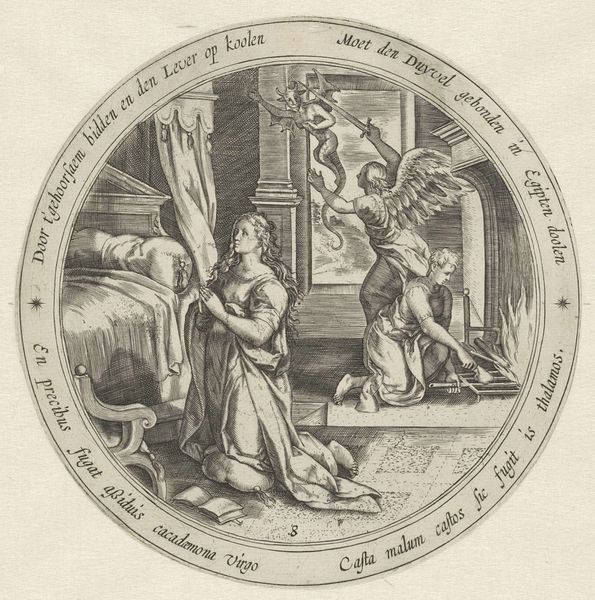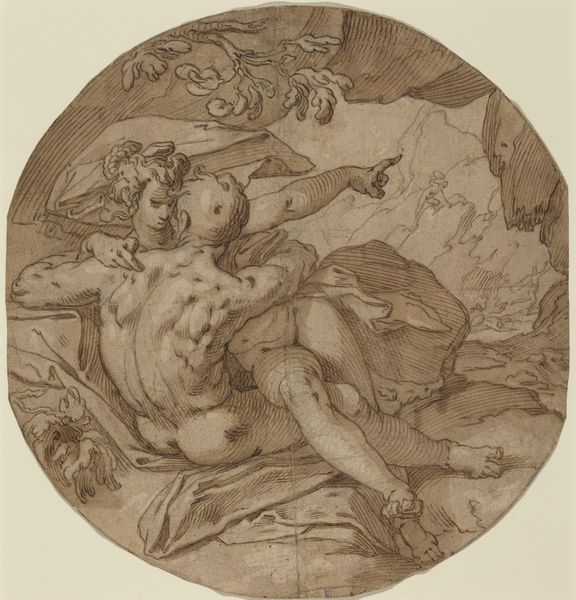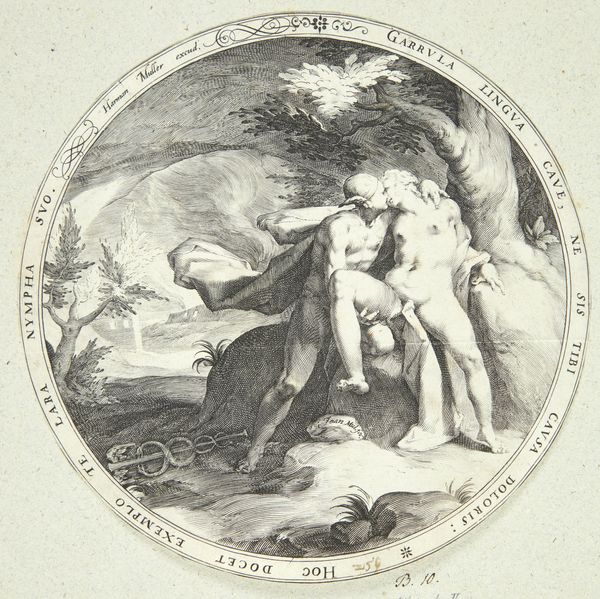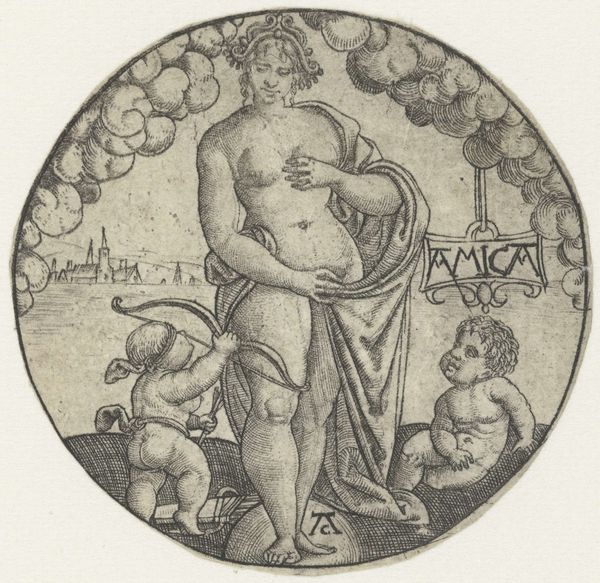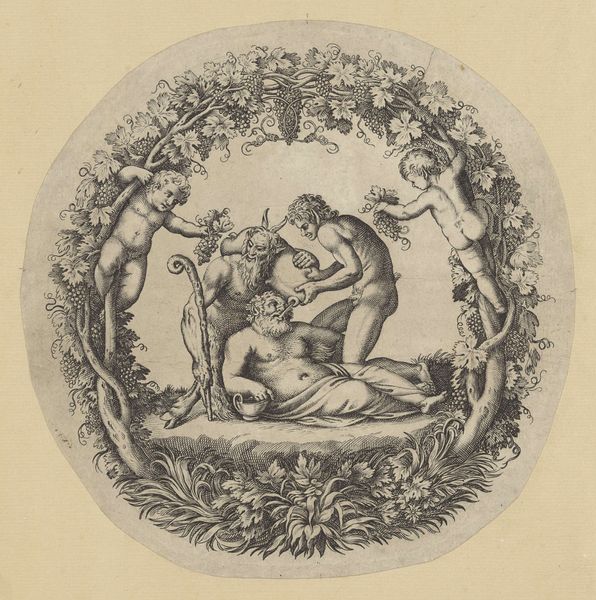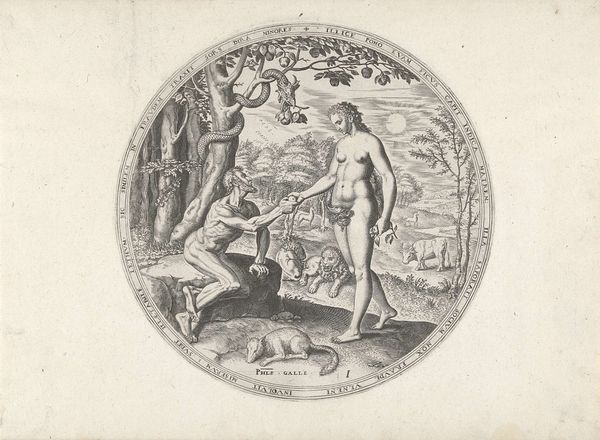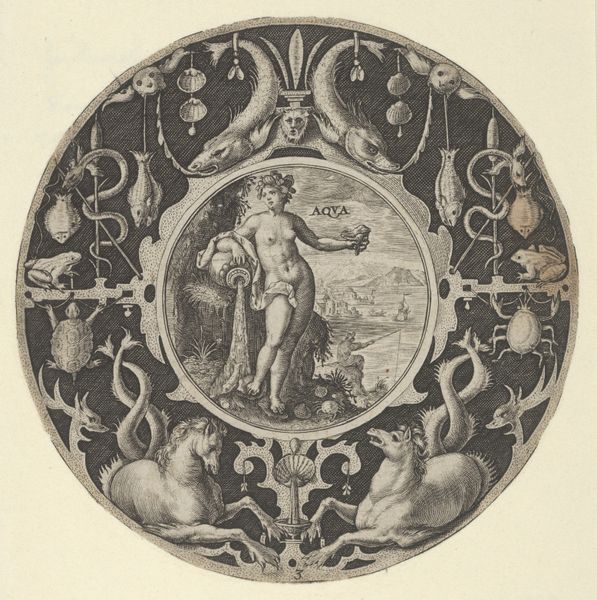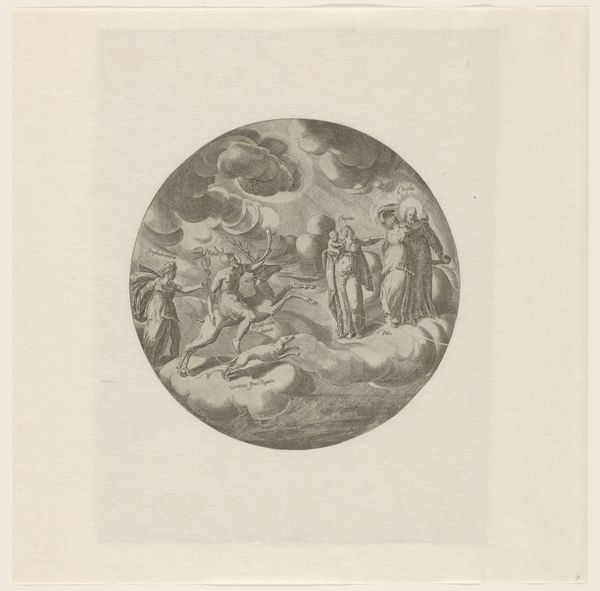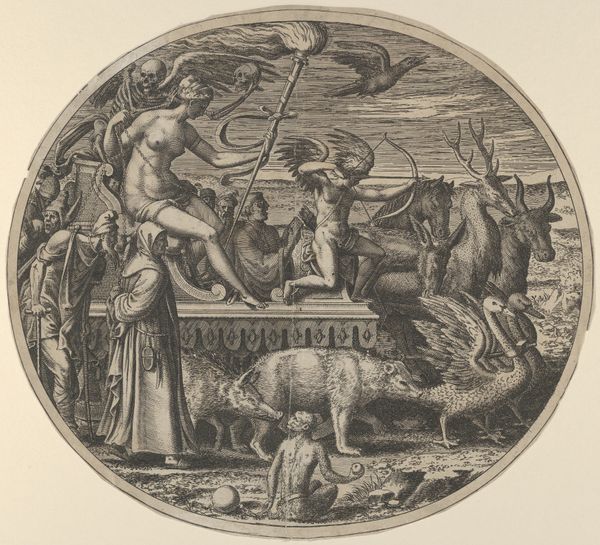
print, engraving
#
allegory
# print
#
old engraving style
#
landscape
#
mannerism
#
figuration
#
nude
#
engraving
Copyright: Rijks Museum: Open Domain
Editor: Here we have Hendrick Goltzius’ engraving, "Venus en Cupido," created sometime between 1588 and 1592. It’s currently housed here at the Rijksmuseum. I’m struck by its classical feel, and how the circular composition encloses the figures, creating a really intimate scene. How do you interpret the symbolism in this print? Curator: The composition immediately calls to mind the complex allegories typical of Mannerism. Notice the inscription, "Venus Sine Cerere et Baccho Friget," meaning Venus grows cold without Ceres and Bacchus – without food and wine, love languishes. What does this suggest about the relationship between physical and emotional needs? Editor: It sounds like the artist believed that pleasure and indulgence are required for love to survive. What about the presence of Venus and Cupid in the setting itself? Curator: The landscape is very deliberate. Venus leans against a fruitful grapevine, emphasizing abundance and fertility, while Cupid's placement draws attention to the dormant cannon. The bow is his more characteristic attribute. Is he setting aside violence, maybe a warning about forcing love? Also consider Venus herself. Is she maternal, protective, or something else entirely? Editor: I see your point about the landscape mirroring the theme, but, ultimately, what remains is this embrace of love within this small domestic circle. Curator: Indeed. It becomes a concentrated emblem about love’s dependencies and its nurturing environment, wouldn’t you say? It reminds us of how visual language has evolved, retaining power and cultural echoes.
Comments
No comments
Be the first to comment and join the conversation on the ultimate creative platform.
